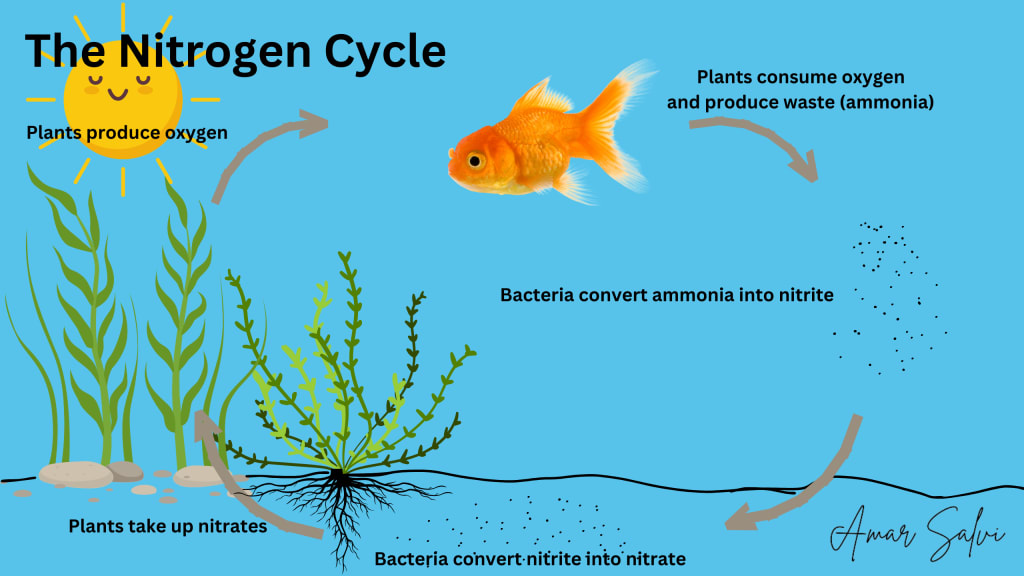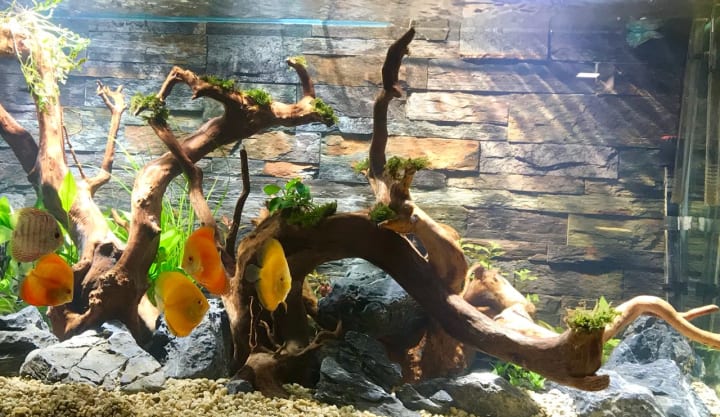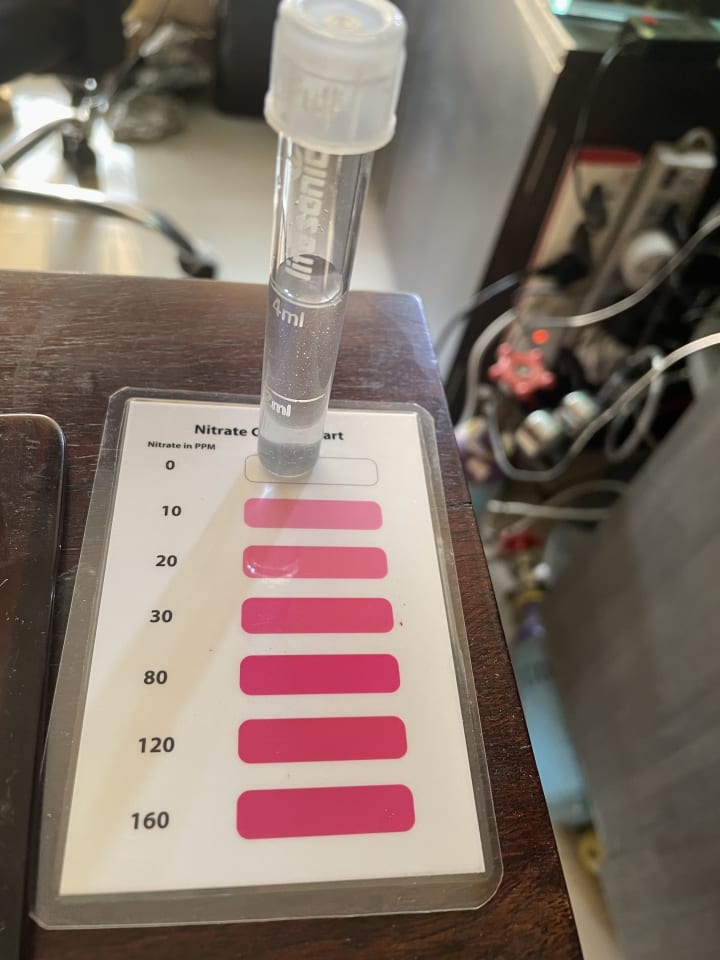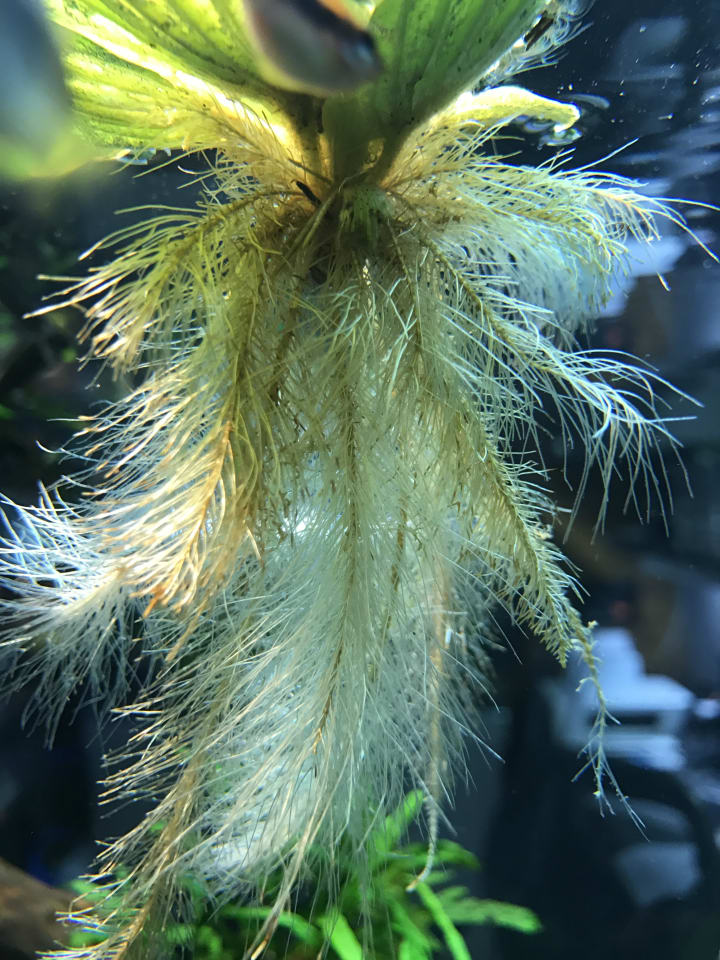Cycling Your Aquarium for a Healthy Start
Understanding the Nitrogen Cycle

The foundation of any healthy aquarium is the Nitrogen cycle. It is the starting point of the journey into the wonderland of aquariums. Let's understand the context first.
In nature, fish live in bodies of water like streams, rivers, estuaries and oceans, which are naturally free of pollutants (Man is increasingly ensuring this does not remain the case though). On the other hand, an aquarium is a microcosm that is in your care and should be kept free of pollutants, with clear, well-oxygenated water. The main villains in our story are ammonia, nitrite and nitrate. These will kill fish if they are left unchecked.
And the heroes in our story? They are the ones you don't see (literally!). These bacteria break down the waste (ammonia) into nitrite and nitrite to nitrate, which plants take up as food. Plants produce oxygen through photosynthesis, which sustains life in the aquarium (and nature).

Let's understand the cycle in detail before we come back to maintaining a near-perfect ecosystem in your aquarium.
Fish and other invertebrates (e,g. shrimp, snails, etc.) living in the aquarium produce carbon dioxide (CO2) when they breathe and defecate. These are consumed by Nitrosomonas bacteria, which are present in water and converted into nitrites. Next, Nitrobacter bacteria convert nitrite to nitrates. Plants consume nitrates and CO2, giving out oxygen, which in turn sustains life in the aquarium, completing the cycle.
In nature, this cycle plays out seamlessly, but in a confined space like an aquarium, establishing this cycle requires some help.
Cycling Your Aquarium - Establishing the Nitrogen cycle:
1. Set Up Your Tank: Choose the aquarium size, substrate, and decorations. Install the necessary equipment like filters, heaters, and lighting. Here, the filter plays the most important role. If budget permits, go for a filter that can house bio-media. As mentioned earlier, one can help speed up the cycle by seeding the filter with bacteria from an existing filter. It's important to note that filters play a significant role in the process.
A special note on Filters: An Aquarium filter is an absolute necessity, with bio-media like porous ceramic rings, naturally porous lava rock chips or bio-balls, all of which provide surface area for the bacteria to colonize. Depending on the size of the aquarium, one can decide the best filter that is needed, small pico and nano aquariums can be sustained through even sponge filters, though it is recommended to have filters that can hold additional media to house the bacteria. Hang-on back filters provide a good alternative. Larger aquariums are best supported by external canister filters, which have space for physical filtration (cotton wool, sponge, etc.), biological filtration (Ceramic rings, lava chips, etc.) and chemical filtration(activated carbon to remove toxins.
2. Condition the Water: Fill the tank with dechlorinated water and adjust the temperature to match the fish species you plan to keep.
3. Add an Ammonia Source: Introduce a source of ammonia to kick-start the nitrogen cycle. You can simply add a small amount of fish food to decompose (a small pinch is enough).
4. Monitor Water Parameters: Regularly test water parameters, including ammonia, nitrites, and nitrates, using test kits. The ammonia levels will initially spike.
5. Wait for the Ammonia Spike: As the ammonia levels rise, Nitrosomonas will start converting ammonia into nitrites. This can take a few days to a few weeks.
6. Nitrite Conversion: As nitrite levels rise, Nitrobacter will develop and start converting nitrites into nitrates.
7. Completing the Nitrogen Cycle: Continue monitoring until both ammonia and nitrite levels drop to zero, indicating that the nitrogen cycle is complete. This process can take up to 2 weeks, more or less.


Maintaining Water Quality
- Water changes: Regular water changes, at least a minimum of 30% weekly, will help reduce excess nitrates and help speed up the cycle while keeping the water quality good.
- Monitoring Water Parameters: As mentioned earlier, a small investment in buying a water testing kit will go a long way in ensuring your aquarium water quality remains top-notch. Test Kits help track pH, Ammonia, Nitrite, Nitrate, General Hardness, etc.
- Cleaning and Gravel Vacuuming: Regularly clean the substrate and vacuum debris to prevent detritus buildup and reduce nitrate levels.
- Filter Maintenance: Clean or replace filter media as needed to ensure optimal filtration and water flow. Cleaning the filter media once in a month will prevent clogging. Remember to clean the filter media by washing it in water siphoned from the aquarium in a bucket. Never wash the filter media under running tap water, as that will kill the bacteria due to the chlorine in the water.
- Avoid Overfeeding: Feed your fish a balanced diet, and only give them what they can consume in a few minutes to prevent excess waste. Siphon off any leftover food, to avoid ammonia spikes.
- Avoid Overstocking: This one is a difficult one as any hobbyist can rarely resist the temptation to keep adding new fish to the aquarium. However, this is the key to maintaining a balanced microcosm, one needs to be aware of the bio-load the aquarium can accommodate.
Mastering the art and science behind maintaining water quality, means understanding the interplay of the bacteria and the role that these heroes play in a self-sustaining microcosm, of course with a little help from the master - You!
Here's to being a successful aquarist! Happy fish-keeping!
About the Creator
Amar Salvi
I am an HR professional with 30 years of work experience, specializing in Talent Acquisition. A certified Life Coach, Tony Buzan Licensed Instructor in Mind Mapping, a professional turned weekend aquarist, avid reader, writer & speaker.






Comments (1)
Very interesting! Great job!